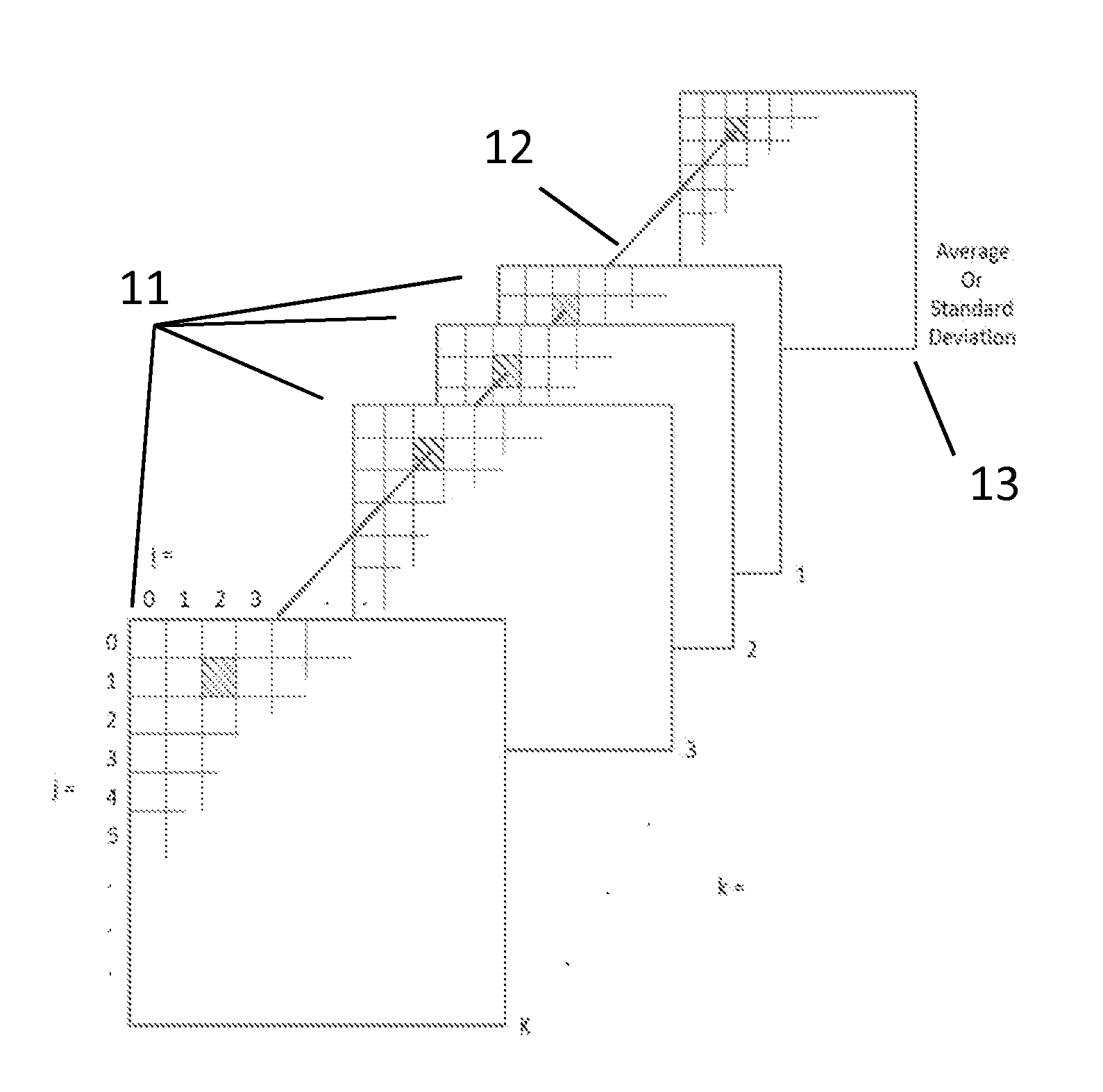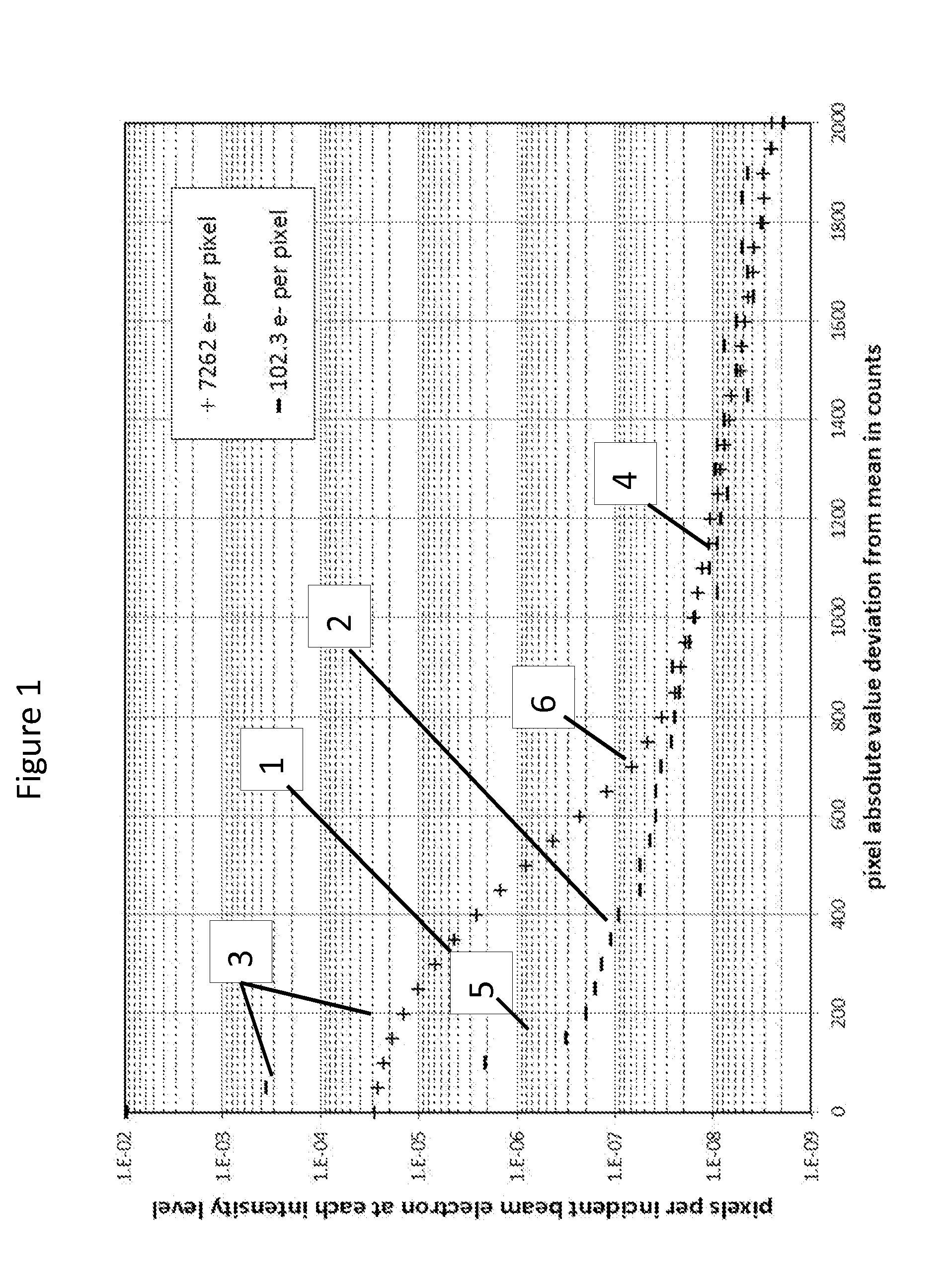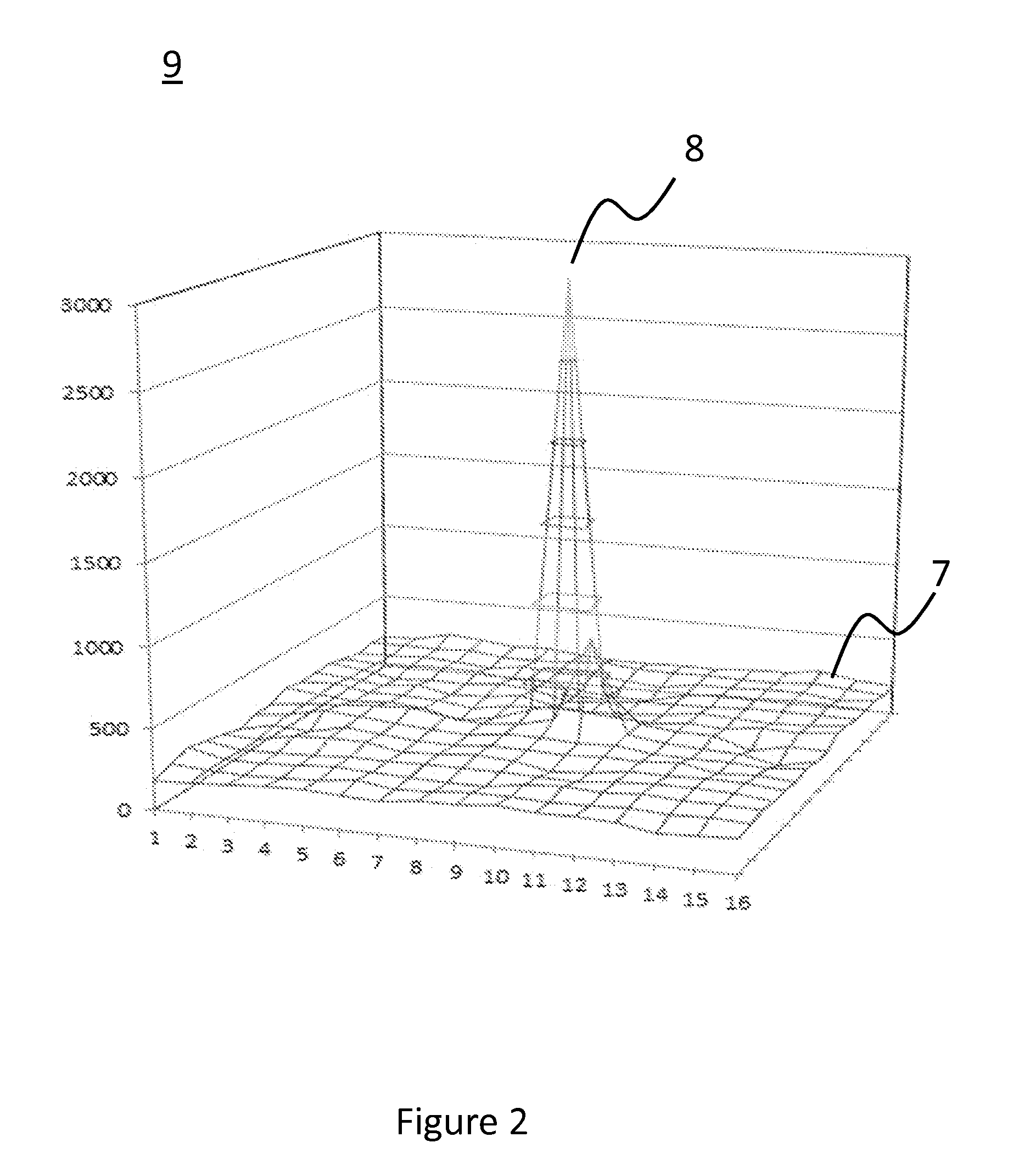Method for Image Outlier Removal for Transmission Electron Microscope Cameras
a transmission electron microscope and image processing technology, applied in image enhancement, immunological disorders, antibody medical ingredients, etc., can solve the problems of not fully effective, method is not fully effective, and only partially effective at performing this latter function
- Summary
- Abstract
- Description
- Claims
- Application Information
AI Technical Summary
Benefits of technology
Problems solved by technology
Method used
Image
Examples
Embodiment Construction
[0020]Fractionating the dose of an exposure, i.e. dividing it into a series of sub-exposures which still add up to the same total dose, creates a number of opportunities to improve outlier removal. First, it allows the evaluation of mean and standard deviation for the determination of an outlier threshold on a pixel-by-pixel basis by providing an exposure series for each pixel and thereby avoids reliance of the method on the assumption of ergodicity. In turn, by virtue of making the statistical evaluation pixel-wise, it largely removes the sensitivity to specimen image characteristics. Second, by reducing the dose at which thresholding is done, less of the direct radiation detection histogram is subsumed into the indirect image signal allowing choice of a lower threshold and a more complete removal of unintended radiation signal. Third, since each sub-exposure can be corrected individually, each pixel of the final summed image will have reduced artifacts from replacement of outliers...
PUM
| Property | Measurement | Unit |
|---|---|---|
| Threshold limit | aaaaa | aaaaa |
Abstract
Description
Claims
Application Information
 Login to View More
Login to View More - R&D
- Intellectual Property
- Life Sciences
- Materials
- Tech Scout
- Unparalleled Data Quality
- Higher Quality Content
- 60% Fewer Hallucinations
Browse by: Latest US Patents, China's latest patents, Technical Efficacy Thesaurus, Application Domain, Technology Topic, Popular Technical Reports.
© 2025 PatSnap. All rights reserved.Legal|Privacy policy|Modern Slavery Act Transparency Statement|Sitemap|About US| Contact US: help@patsnap.com



